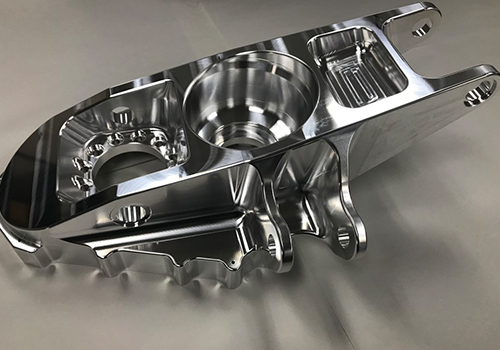5-Axis Milling Services
Part complexity often requires the need for a true 5-Axis machine. So we have two matching UMC750SS mills. These 5-axis mills are our go to option for large, and complex parts where locational tolerances are critical. By using a 5-axis machine we can machine many features from different approach angles. This can be a huge advantage on parts where locational accuracy is crucial, reducing load errors, and the need for expensive fixturing that would be required on a traditional 3 axis mill. This also allows us to drastically reduce the number of operations a part may require, bringing a potentially four or five operation parts to just one or two operations. Staying competitive in this industry is vital to our success and 5-axis capability allows us to be competitive on all fronts. Whether it's 3+2 machining, or true simultaneous 5-axis toolpaths we have the machine tools for the job.
5 Axis Milling Equipment
- HAAS UMC750SS x2 Five Axis High Capability milling
Other Equipment
- Do-All DC-330NC automatic bar pulling CNC saw
- HAAS VF2SS x5 High Production milling
- HAAS HRT210 x3 4th Axis High Production milling
- HAAS ST30 x1 General Purpose turning
- Mitutoyo Crysta Apex S574 CMM
Why Choose Aspex CNC for 5-Axis Milling Services?
Aspex CNC creates partnerships designed to increase productivity and reduce total costs for its customers. Our expert team of professionals deliver 5-Axis Milling services at a competitive price that impacts the bottom line. Additional advantages of partnering with us include but are not limited to:
- Innovative and cost-effective solutions designed to increase productivity and save time and money.
- The highest quality engineers and machinist in the industry.
- Streamlined processes designed to provide expertise and short lead times.
- In-house capabilities providing full-service prototype milling services.
- Safe and green business practices designed to support workplace safety and environmental sustainability.
We are here to help you win your bid or help you complete the next game changing product design.
As a part of that process, Aspex offers Prototype Milling and Turning as well as standard production work.
FAQs
3 axis machining involves a workpiece in a fixed position while the cutting tool operates along the X, Y, Z plane to cut away material. 3-axis machining is most suitable for parts that do require a lot of depth and detailing
4-axis machining adds movement of the cutting tool and allowing rotation around the X axis. As a result, there are 4 axes X, Y, Z and A rotating around the X axis. The majority of 4 axis CNC machine tools allow the workpiece to rotate, which is called b-axis, so the machine can act as both milling machine and lathe.
5-Axis machining is a process where you take a large block and remove the excess. On a 5-axis machining-center, the cutting tool moves across the X, Y and Z linear axes as well as rotates on the A and B axes to approach the workpiece from any direction.
CNC milling (Computer Numerical Control Milling) is a machining process which utilizes computerized controls and rotating cutting tools to remove material from the workpiece to produce a specific product or part. The process is suitable for machining materials like metal, plastic, glass, and wood, and producing a variety of custom-designed parts and products.
CNC (Computer Numerical Control) turning is a machining process where computer-controlled machining tools operate a turning metal lathe removing material on part to reach a desired shape.
CNC machining costs depend heavily on the time needed, complexity, quantity, and size of the part. Complex large parts require longer machining time which increases costs. However, the higher quantities of parts can reduce the set-up costs and unit price.
Coordinate measuring machines (CMM) probes are transducers that convert physical measurements into electrical signals utilizing various measuring systems within the probe structure. CMM probes are a large category of instruments that use different technologies for direct and comparative measurements.
A bar puller also allows a CNC lathe or turning center to be automated which frees the operator to work on other projects. Unlike a bar feeder that pushes a bar through the lathe’s spindle, a puller pulls the bar from the spindle.


